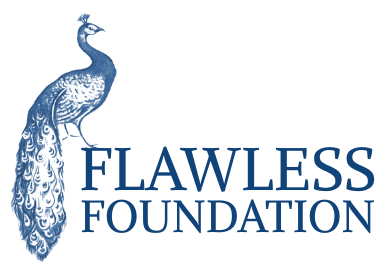By Georgie Blenkey, Flawless Intern
We just returned from the annual PeaceLove Storytellers event, held at Rhode Island College. A total of thirteen inspiring speakers shared their stories through speeches, song, or poetry. The event was so powerful not only because of what was said but also because it was such an exciting celebration of creativity. The stories ranged from accounts of overcoming struggles to demonstrations of art and creativity —some storytellers flawlessly combined both.

 As someone who has always described myself as creative and is studying and pursuing art constantly, I found this event deeply moving. Since this was my first time attending this event, I didn’t know what to expect. I knew that PeaceLove is a creative mental health organization, and so I assumed the event would interweave mental wellness topics with the creative arts, but I was pleasantly surprised to see just how much creativity was the focus of the day.
As someone who has always described myself as creative and is studying and pursuing art constantly, I found this event deeply moving. Since this was my first time attending this event, I didn’t know what to expect. I knew that PeaceLove is a creative mental health organization, and so I assumed the event would interweave mental wellness topics with the creative arts, but I was pleasantly surprised to see just how much creativity was the focus of the day.
I found the ways people told stories through art to be really impressive and inspiring. For example, when U-Meleni Mhlaba-Abedo walked on stage singing with a suitcase full of journals, I wasn’t expecting it—but I found it beautiful. The way she seamlessly wove spoken word and song to tell her story showed the myriad of ways that art can be used to communicate. When Devan Mulvaney expressed his grief over the loss of his family through music, it was another inspiring example of communication through art. The most powerful moment was when he described his journey to forgiveness after performing his song. These Storyteller’s performances reminded me of exactly what art is supposed to do: to help you feel and connect.
Philip Sheppard used two examples to perfectly demonstrate the connecting power of art: first, when he honored the life of brain health advocate Jeremy Richman, who had been a storyteller a few years ago, and also when he drew on some of the Storytellers’ performances to reinforce the lessons we learned that day. Perhaps the biggest lesson comes from Devin Wildes: “We afe wirk to do.”

Dr. Husseini Manji said it best: “Mental illness touches us all, every single one of us, one way or another.” The PeaceLove Storytellers event was so inspiring because it reminded me and the rest of the attendees that mental health issues connect everyone. And what better way to express this connection than through creativity?

I expected to nap through the four-hour train ride home to New York, but my mind kept replaying the events of that day. So many people shared vulnerable parts of themselves. From Tatyana Frost’s account of learning computer programming, despite never feeling talented enough, to Mark Brand’s reminder of how anyone can help make a difference, no matter their skill, each Storyteller had something valuable to say.
I also kept thinking about how I could connect my own art to my experiences with mental health. I have studied art and art history in school for a long time but it is rare to be not only encouraged, but inspired, to share stories through art, in the unique way I’ve seen at Storytellers. Of course, school has taught me to draw on my experiences in my art, but I’ve never really felt comfortable being completely open about what inspires certain pieces. Seeing the way the Storytellers were so honest about their experiences reminded me that there is no reason not to be open myself. Communication goes hand in hand with creating. Not only should you be able to tell a story through art, but you should feel comfortable openly expressing a message—even if that message is personal. Events like Peacelove Storytellers remind us all that we are more connected than we think we are— so why not share our story?






